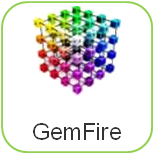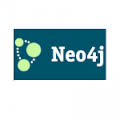In my previous tutorial, I have explained about the accessing data using Spring Data GemFire. GemFire is the in-memory data system used in the distributed environments. The performance and scalability achieved by GemFire by using the efficient caching techniques for storing in the in-memory. In this tutorial I will explain the purpose, in that connections …
PrimeFaces + Spring Roo + Spring Data + MongoDB Integration Example
This tutorial will introduce the integration of Primefaces, Spring Data & MongoDB frameworks. This tutorial assumes the you are familiar with the Spring Roo for creating the spring applications. Also, I assume that you are familiar with the Mongo DB. If you’re not, it’s good for you to go back into the below tutorials for getting …
PrimeFaces + Spring Roo + Spring Data JPA Integration Example
This tutorial presents how to develop a web application using PrimeFaces using Spring ROO and Spring Data JPA. In our previous tutorials we have explained each topic with more examples. Spring ROO is the rapid application development tool for the spring applications. It improves the productivity of software development. To Getting started this tutorial, be sure …
PrimeFaces 5 + Spring Data + MySQL Integration
This tutorial guides you through creating a web application that integrates between PrimeFaces 5, Spring Data and MySQL database. It’s important for you to learn the basics of the technologies PrimeFaces and Spring Data before start reading this tutorial. Also read: Spring Data JPA Spring Data JPA + Querydsl Spring Data + MongoDB Connect With …
Spring Data Neo4j 3 REST Exporter – Converting Spring Boot JAR Application To WAR
This tutorial is the continuation of the previous tutorial for building the standalone application using spring boot. This guide walks you through the process of converting a runnable JAR application that was built with Spring Boot into a WAR file that you can run in any standard servlet container. You’ll take a simple Spring MVC web …
Spring Data Neo4j 3 REST Exporter (Java Application)
This tutorial walks you through the process of creating an application that accesses graph-based data through a hypermedia-based RESTful front end. You’ll build a Spring application that let’s you create and retrieve Employee and Address objects stored in a Neo4j NoSQL database (Neo4j Server) using Spring Data REST. You’ll use the non embedded Neo4j for achieving …
PrimeFaces + Spring Data + Neo4j Integration
This tutorial provides example code for integrating PrimeFaces 5, Spring Data and Neo4j technologies. In our previous tutorials, I have explained about the PrimeFaces and Spring Data integration with other databases MongoDB and Redis. Also read our previous tutorials on installation of Neo4j and Spring Data Neo4j tutorial. I have used PrimeFaces 5 for this example. …
java.lang.IncompatibleClassChangeError: class org.springframework.core.type.classreading.ClassMetadataReadingVisitor has interface org.springframework.asm.ClassVisitor as super class
Why java.lang.IncompatibleClassChangeError Exception Thrown? If you are working with Spring MVC and Spring Data Neo4j, then there is greater possibility that you would get the following exception when it comes to run the application using one of the Java EE container like Apache. I’ve used Apache Tomcat 7.35 for deploying a PrimeFaces 5 application with …





